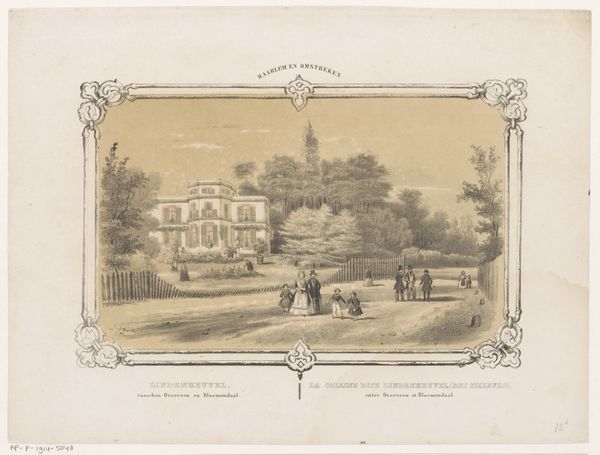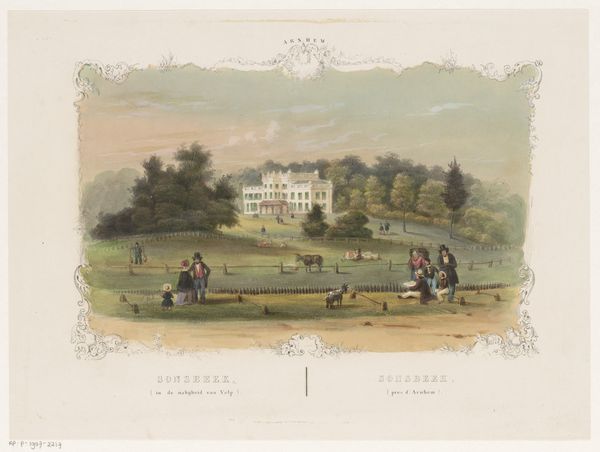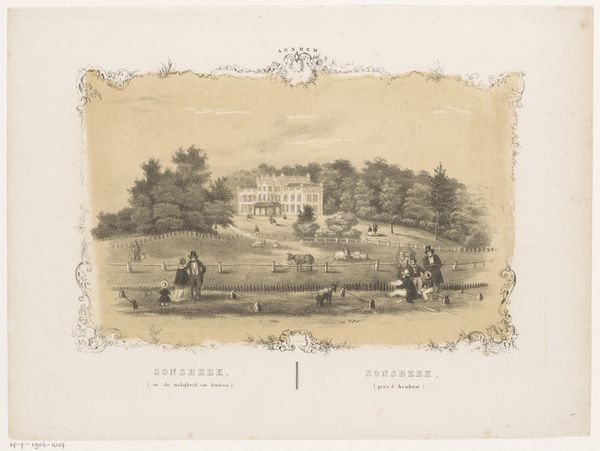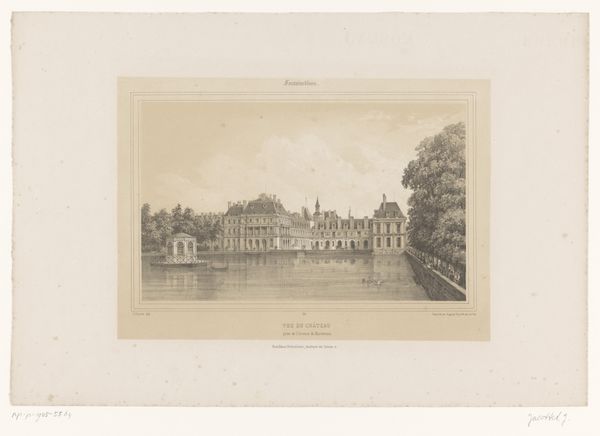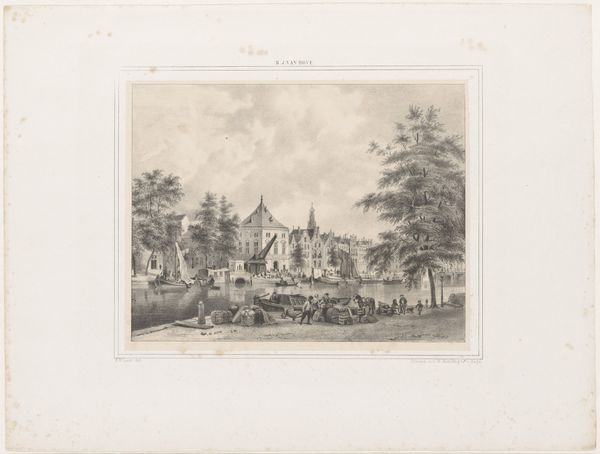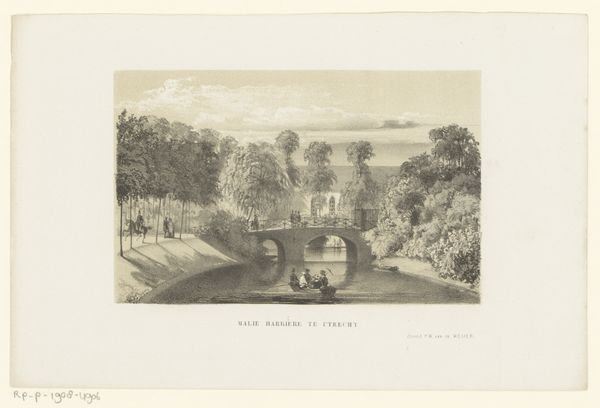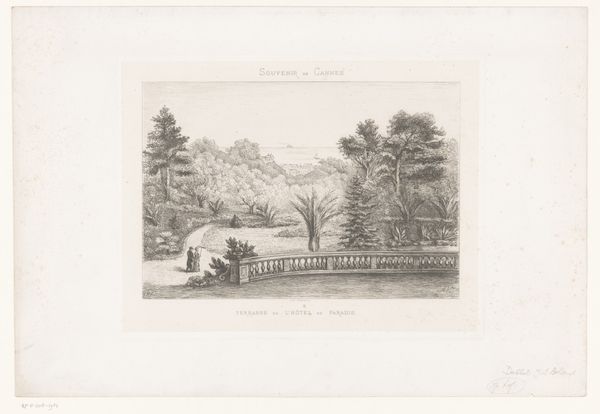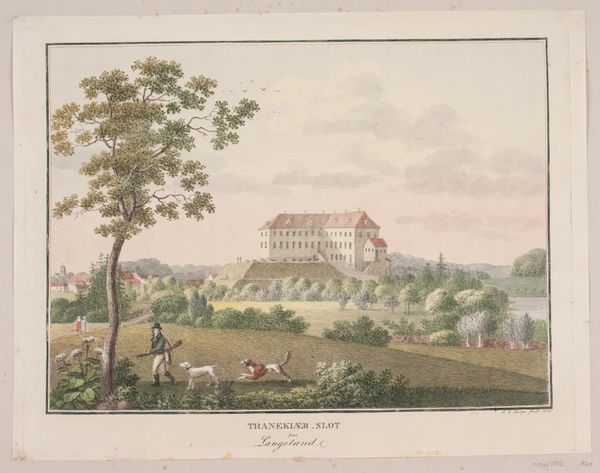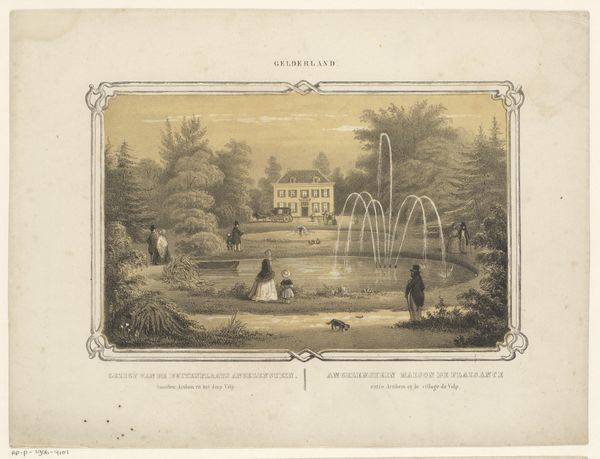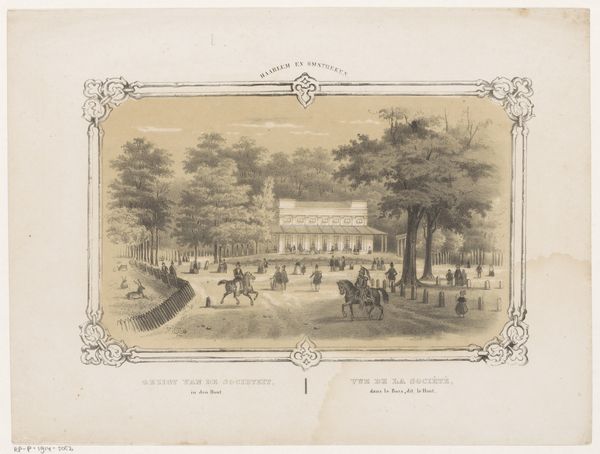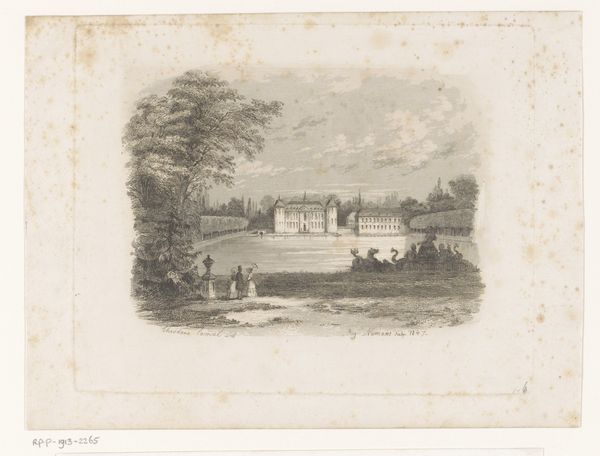
print, etching
#
garden
#
neoclacissism
# print
#
etching
#
landscape
#
cityscape
#
genre-painting
Dimensions: height 230 mm, width 300 mm
Copyright: Rijks Museum: Open Domain
Editor: This is "Sociëteit de Harmonie in Groningen," a print made after 1857. The artist is Carel Christiaan Antony Last, and it's currently housed at the Rijksmuseum. It looks like a scene from a pleasant afternoon at a public garden, doesn’t it? The mood feels calm and leisurely. What stands out to you most about this print? Curator: What captures my attention is how this seemingly simple landscape evokes a yearning for order and civility, so characteristic of Neoclassicism. The society portrayed clearly embraced the enlightenment ideals, reflecting this through its architecture, dress, and communal interaction in a controlled green space. Consider the "harmonie"—not just musical harmony, but social harmony. Editor: So the setting itself is symbolic? Curator: Precisely! Note how nature is carefully curated, not wild or untamed. The formal gardens mirror the formal social structure. The people are arranged almost symmetrically around the building, creating this idealized scene that promotes values like balance and decorum. Do you see any hints of potential disruption of this sense of order? Editor: I see… maybe the way some figures are grouped in conversation, suggesting perhaps private thoughts within this very public display? Or maybe the little randomness of trees and leaves in an otherwise very neat setting? Curator: Intriguing. It's about the layers. While the main scene is ordered and predictable, it may highlight some tension, or negotiation, of social cohesion. It subtly reminds us that harmony requires continual effort and adaptation. What does this reflection make you think of today's society? Editor: It makes me think about how we still seek spaces for community, though the symbols have definitely changed! It seems we have traded this emphasis on formality with other ways of achieving "harmony." I definitely see so much more here now than before! Curator: And that's the exciting potential of visual symbols—to reflect who we are and who we aspire to be.
Comments
No comments
Be the first to comment and join the conversation on the ultimate creative platform.
